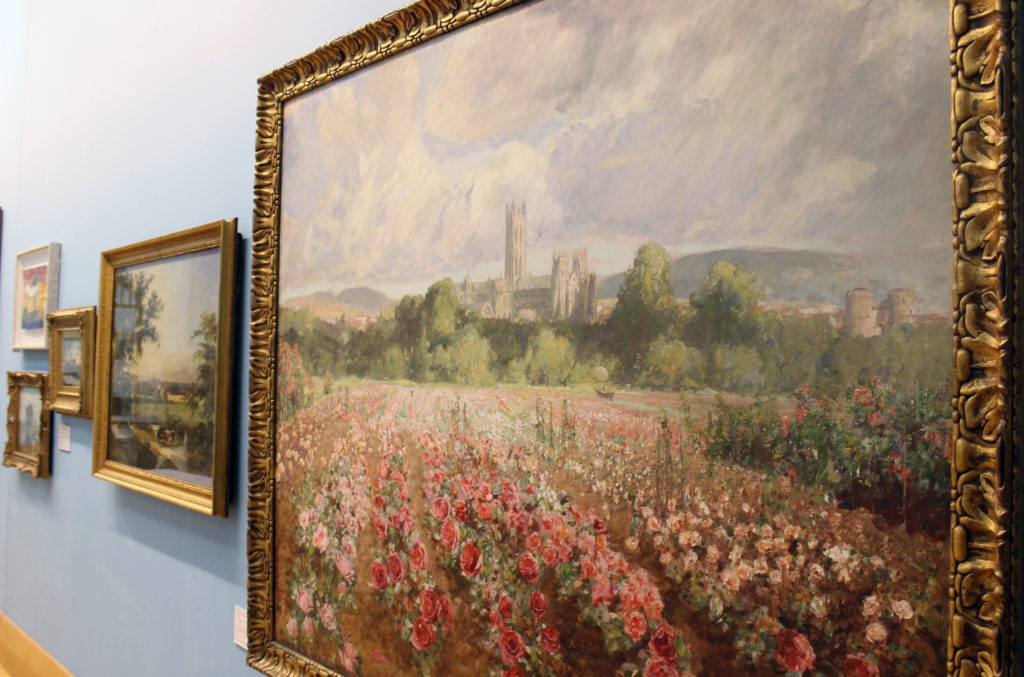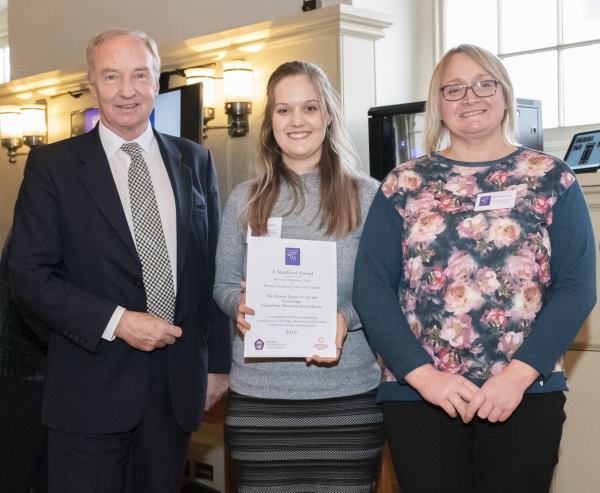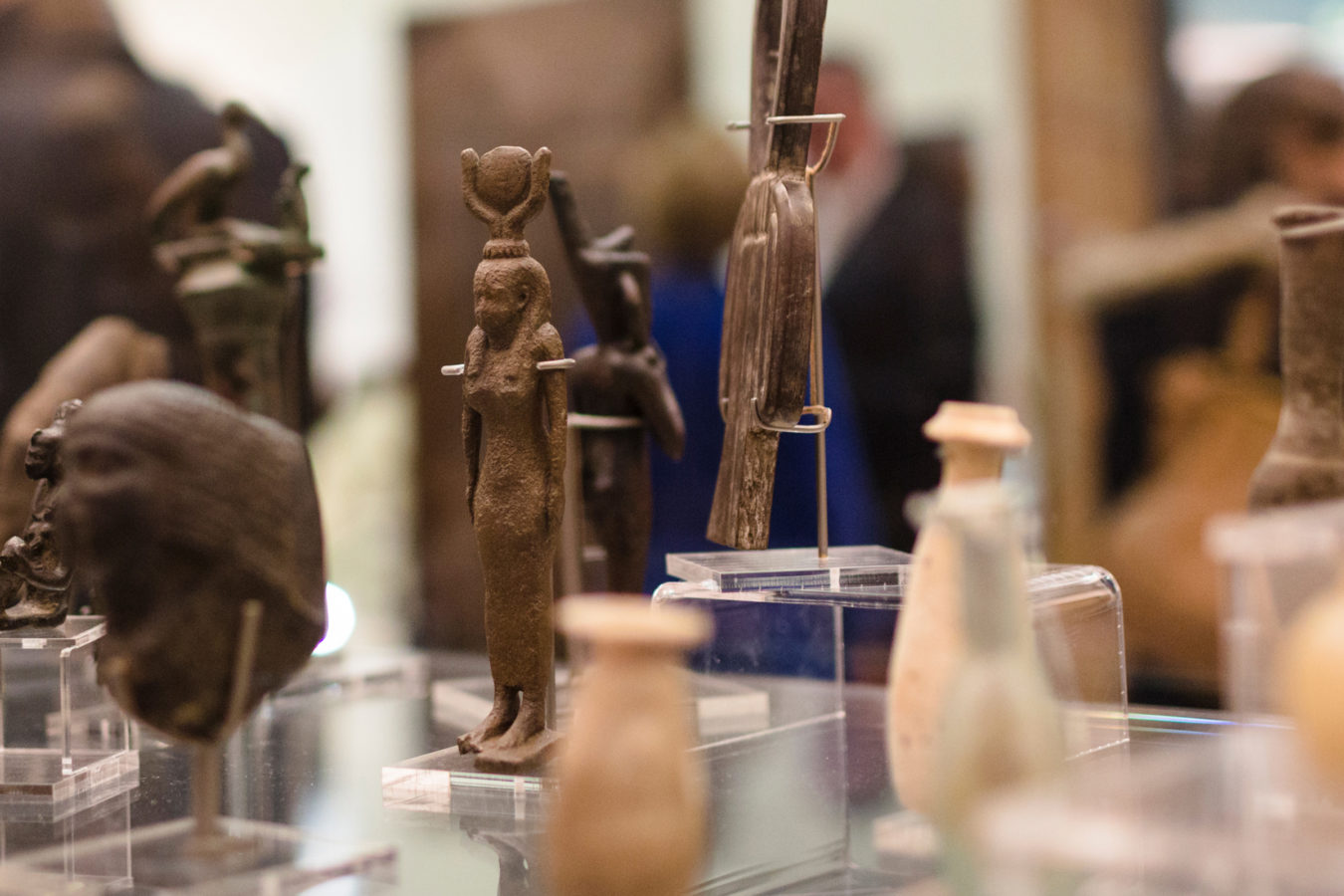
Easter fun at the museums!
Exhibitions, trails and activities; six fun things for all the family to enjoy at The Beaney and...
For our first instalment, we chat with Grace Conium, one of our Collections and Learning Assistants, about all things collections, learning, volunteering and breaking into the museums and heritage sector.
So what’s your job role?
A Collections and Learning Assistant at Canterbury Museums and Galleries.
What is your fave exhibition you’ve seen recently and why?
We recently had ‘The Story of the Ladybird Artists 1940 to 1975’ displayed in our Special Exhibitions Gallery from June to September 2018. It combined books, original artwork and artefacts in exploring the works of the individual illustrators of Ladybird books. What was brilliant was that the displays engaged with so many generations at once and inspired so much conversation between visitors and staff. I also got a chance to read a few of the stories my nan read to me as a child within the books at the reading corner, some of which I had completely forgotten until then!
What does a regular day in the office look like?
Something I love about my job is that no two days are the same. As a Collections and Learning Assistant, I can go from delivering workshops in the morning, to researching Anglo-Saxon finds in the afternoon. A ‘regular day’ (if one exists) for me would include organising the bookings for educational group visits and maybe delivering a schools workshop. With collections, I’m currently spending some time researching our images we have for the collection, especially our artworks, to ensure they are being used effectively.
What do you enjoy most about your role?
I love being able to incorporate my knowledge of our collection within the design of our children’s activities, such as ‘The Case of Edith Miller’ Halloween trail and recent ‘Easter Egg Hunt Trail’. The combination of Collections and Learning is new for me, but so far has been really enjoyable!
How did you get into museum work?
I was fortunate enough to be able to go to university, where I gained a BA in Archaeology and Anthropology and an MA in Curating. I also volunteered for a number of museums during my studies within their collection departments, which helped me to realise this was what I wanted to do. After my studies, I continued my volunteering with Canterbury Museums and Galleries while working as a part of their Visitor Services team. A few years after I graduated, a temporary Collections Assistant job came up which I got! After that project finished, the permanent role of ‘Collections and Learning Assistant’ came up, which I applied for and got the position. I’ve now been at my current post for 6 months. I definitely had a lot of job interviews during these years, and it took quite a while to get a full time position.
What’s something people might not know about your job?
I think people might assume it’s quite sedentary and office based, which is far from the truth! While I do need a computer, I’m often on my feet and spend a lot of time in different locations like the museum’s galleries and collections store.

Grace, pictured in the middle, accepting The Beaney’s Sandford Award for education with Anna, our Administration and Finance Manager.
Lots of people dream of working at renowned heritage institutions and national museums, but what do you think are the benefits of working/volunteering at a smaller institution?
I would say being able to work in a smaller team has lots of benefits. Not only is it a really nice atmosphere, it also means I get to be involved in a wide variety of projects which may not have been possible if I worked for a national institution. It was also really beneficial as a volunteer! It meant I could work with different people in lots of different roles and quickly build up a diverse range of experience.
Obviously volunteering is a brilliant place to start for those embarking on a heritage career – is there anything else you can do to build up your CV?
As you said, volunteering is always a good place to start. If you struggle getting a volunteer opportunity with the bigger museums (especially if there is a large student population, such as Canterbury)- I would advise trying the museums in the surrounding towns. Also attend as many relevant lectures, conferences, and even private views as possible to build your knowledge. Plus they are a great opportunity to network with fellow heritage workers! Training days and online courses in fields which interest you are also great ways of finding out more information about different areas of heritage work. Keep an eye on your area’s Museums Development website for upcoming events and opportunities. Volunteering really is just the beginning of building a well-rounded heritage CV!
Do you have any tips for someone wanting to start a career in heritage but who may feel disheartened by how difficult it can be to break into the sector?
I understand how difficult it can be getting a job in this very competitive field. I applied for many jobs when I was looking and was rejected after interviews only to be told I was ‘second choice’. The silver lining was the rejections made my applications and interview skills much better, plus I found out what skills and experiences they were looking for me to then develop further. I wasn’t as nervous meeting strangers and trying to sell myself, since I had done this many times before. I started to ask for feedback after every application – there wasn’t always a response but I did get some useful comments. Whilst it was upsetting hearing ‘no’, it has made me appreciate the job I have and the amazing team I get to work with!
Keep an eye on any vacancies at Canterbury Museums and Galleries on the Canterbury City Council website here.
